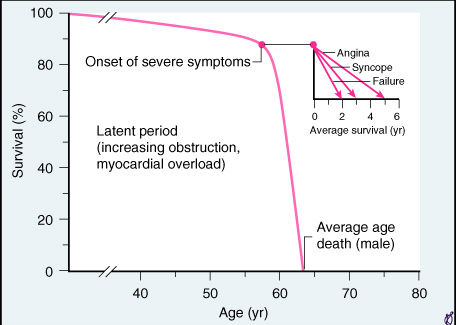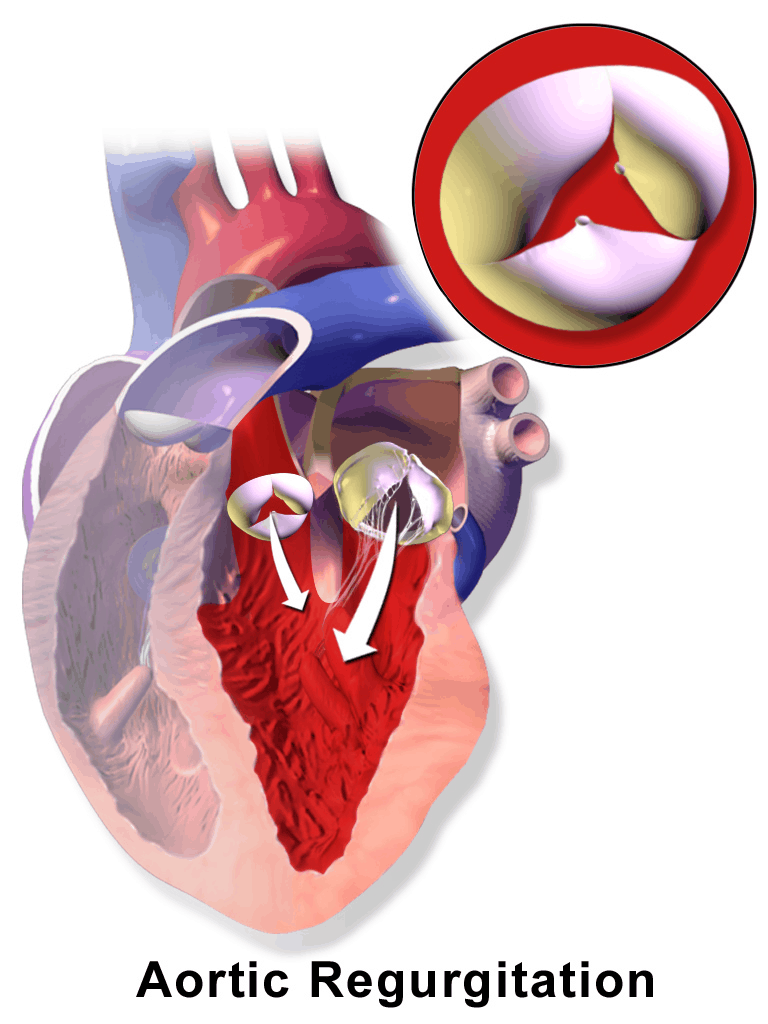About Aortic Valve Disease
About Aortic Valve Disease
About Aortic
Valve Disease
About Aortic Valve Disease
Aortic valve disease is a complex and life-threatening form of heart disease resulting from a blocked aortic valve (aortic stenosis) or a leaking aortic valve (aortic regurgitation). Scroll below to learn more.
Aortic valve disease is a complex and life-threatening form of heart disease resulting from a blocked aortic valve (aortic stenosis) or a leaking aortic valve (aortic regurgitation). Scroll below to learn more.
Aortic valve disease is a complex and life-threatening form of heart disease resulting from a blocked aortic valve (aortic stenosis) or a leaking aortic valve (aortic regurgitation). Scroll below to learn more.
Aortic valve disease is a complex and life-threatening form of heart disease resulting from a blocked aortic valve (aortic stenosis) or a leaking aortic valve (aortic regurgitation). Scroll below to learn more.
1 Out of 50 People Suffer
from Aortic Valve Disease
1 Out of 50 People Suffer
from Aortic Valve Disease
1 Out of 50 People Suffer
from Aortic Valve Disease
1 Out of 50 People Suffer
from Aortic Valve Disease
1 Out of 50 People Suffer from Aortic Valve Disease

Aortic Stenosis
Aortic Stenosis
Aortic Stenosis
Aortic Stenosis
Aortic Stenosis is a narrowing of the aortic valve that restricts blood flow to the human body. Aortic stenosis can progress slowly over many years. Or, the disease can progress quickly resulting in symptoms including fatigue, shortness of breath, heart palpitations and chest pain. The risks of not treating aortic stenosis are an enlarged heart, congestive heart failure and death.
Aortic Stenosis is a narrowing of the aortic valve that restricts blood flow to the human body. Aortic stenosis can progress slowly over many years. Or, the disease can progress quickly resulting in symptoms including fatigue, shortness of breath, heart palpitations and chest pain. The risks of not treating aortic stenosis are an enlarged heart, congestive heart failure and death.

Approximately 1.5 million people in the United States have aortic stenosis. It is estimated that 500,000 people have a severe form of the disease. Unfortunately, 250,000 people have side effects that limit their daily activities. As aortic stenosis is often mis-diagnosed and patients can be asymptomatic, over 750,000 people are unaware they have aortic stenosis.
Approximately 1.5 million people in the United States have aortic stenosis. It is estimated that 500,000 people have a severe form of the disease. Unfortunately, 250,000 people have side effects that limit their daily activities. As aortic stenosis is often mis-diagnosed and patients can be asymptomatic, over 750,000 people are unaware they have aortic stenosis.
Approximately 1.5 million people in the United States have aortic stenosis. It is estimated that 500,000 people have a severe form of the disease. Unfortunately, 250,000 people have side effects that limit their daily activities. As aortic stenosis is often mis-diagnosed and patients can be asymptomatic, over 750,000 people are unaware they have aortic stenosis.
Alert: 50% of Patients Diagnosed with
Severe Aortic Stenosis Pass Away 24 Months
After the Onset of Symptoms
Alert: 50% of Patients Diagnosed with Severe Aortic Stenosis Pass Away 24 Months After the Onset of Symptoms
Alert: 50% of Patients Diagnosed with
Severe Aortic Stenosis Pass Away 24 Months
After the Onset of Symptoms
Alert: 50% of Patients Diagnosed with Severe Aortic Stenosis Pass Away 24 Months After the Onset of Symptoms
Alert: 50% of Patients Diagnosed with Severe Aortic Stenosis Pass Away 24 Months After the Onset of Symptoms
Alert: 50% of Patients Diagnosed with Severe Aortic Stenosis Pass Away 24 Months After the Onset of Symptoms

Mortality After Onset of Severe Aortic Stenosis Symptoms
Mortality After Onset of Severe Aortic Stenosis Symptoms
Aortic Regurgitation (Insufficiency)
Aortic Regurgitation (Insufficiency)
Aortic Regurgitation (Insufficiency)
Aortic Regurgitation (Insufficiency)
Aortic regurgitation is a condition that occurs when the leaflets (or flaps) of the aortic valve do not close properly. As a result, blood that was pumped out of the heart leaks back into the heart causing extra strain on the muscle.
Aortic regurgitation is a condition that occurs when the leaflets (or flaps) of the aortic valve
do not close properly. As a result, blood that was pumped out of the heart leaks back into
the heart causing extra strain on the cardiac muscle.
Aortic regurgitation is a condition that occurs when the leaflets (or flaps) of the aortic valve do not close properly. As a result, blood that was pumped out of the heart leaks back into the heart causing extra strain on the muscle.
Aortic regurgitation is a condition that occurs when the leaflets (or flaps) of the aortic valve do not close properly. As a result, blood that was pumped out of the heart leaks back into the heart causing extra strain on the muscle.

Some common symptoms of aortic regurgitation are as follows:
- Fatigue and weakness, especially when you increase your activity level
- Shortness of breath, especially with exertion or when you lie flat
- Chest pain, discomfort or tightness, often increasing during exercise
- Fainting
- Heart palpitations
- Swollen ankles and feet
Some common symptoms of aortic regurgitation are as follows:
- Fatigue and weakness, especially when you increase your activity level
- Shortness of breath, especially with exertion or when you lie flat
- Chest pain, discomfort or tightness, often increasing during exercise
- Fainting
- Heart palpitations
- Swollen ankles and feet
Some common symptoms of aortic regurgitation are as follows:
- Fatigue and weakness, especially when you increase your activity level
- Shortness of breath, especially with exertion or when you lie flat
- Chest pain, discomfort or tightness, often increasing during exercise
- Fainting
- Heart palpitations
- Swollen ankles and feet
Some common symptoms of aortic regurgitation are as follows:
- Fatigue and weakness, especially when you increase your activity level
- Shortness of breath, especially with exertion or when you lie flat
- Chest pain, discomfort or tightness, often increasing during exercise
- Fainting
- Heart palpitations
- Swollen ankles and feet
How Can Aortic Valve
Disease Be Treated?
How Can Aortic Valve Disease Be Treated?
How Can Aortic Valve
Disease Be Treated?
How Can Aortic Valve
Disease Be Treated?
Aortic valve disease is treated using surgical or transcatheter techniques. During a surgical procedure, the valve is repaired or replaced during open-heart surgery. In a transcatheter procedure, there is no incision to the patient’s chest or ribs. Instead, a catheter is used to replace the patient’s diseased aortic valve without open-heart surgery.
In 2011, the FDA approved the first, non-invasive transcatheter aortic valve replacement (TAVR) device for inoperable patients. Since then, TAVR received FDA approval for high-risk and intermediate risk patients. In 2019, TAVR was approved for low-risk patients with aortic stenosis. Watch this video to see how TAVR works without an incision to the patient’s chest or ribs.
Aortic valve disease is treated using surgical or transcatheter techniques. During a surgical procedure, the valve is repaired or replaced during open-heart surgery. In a transcatheter procedure, there is no incision to the patient’s chest or ribs. Instead, a catheter is used to replace the patient’s diseased aortic valve without open-heart surgery.
In 2011, the FDA approved the first, non-invasive transcatheter aortic valve replacement (TAVR) device for inoperable patients. Since then, TAVR received FDA approval for high-risk and intermediate risk patients. In 2019, TAVR was approved for low-risk patients with aortic stenosis. Watch this video to see how TAVR works without an incision to the patient’s chest or ribs.
Aortic valve disease is treated using surgical or transcatheter techniques. During a surgical procedure, the valve is repaired or replaced during open-heart surgery. In a transcatheter procedure, there is no incision to the patient’s chest or ribs. Instead, a catheter is used to replace the patient’s diseased aortic valve without open-heart surgery.
In 2011, the FDA approved the first, non-invasive transcatheter aortic valve replacement (TAVR) device for inoperable patients. Since then, TAVR received FDA approval for high-risk and intermediate risk patients. In 2019, TAVR was approved for low-risk patients with aortic stenosis. Watch this video to see how TAVR works without an incision to the patient’s chest or ribs.
Aortic valve disease is treated using surgical or transcatheter techniques. During a surgical procedure, the valve is repaired or replaced during open-heart surgery. In a transcatheter procedure, there is no incision to the patient’s chest or ribs. Instead, a catheter is used to replace the patient’s diseased aortic valve without open-heart surgery.
In 2011, the FDA approved the first, non-invasive transcatheter aortic valve replacement (TAVR) device for inoperable patients. Since then, TAVR received FDA approval for high-risk and intermediate risk patients. In 2019, TAVR was approved for low-risk patients with aortic stenosis. Watch this video to see how TAVR works without an incision to the patient’s chest or ribs.
Contact Our Nurses for an
Appointment or Second Opinion
Contact Our Nurses for an
Appointment or Second Opinion
Contact Our Nurses for an Appointment or Second Opinion

Call (866) 378-0309
Call (866) 378-0309
Monday - Friday, 9am - 5pm CST
Monday - Friday, 9am - 5pm CST


Take the Online Screener
Take the Online Screener
60-second survey
60-second survey
Contact Our Nurses for an
Appointment or Second Opinion
Contact Our Nurses for an
Appointment or Second Opinion
Find Out If You Are Eligible
Find Out If You Are Eligible
Find Out If
You Are Eligible
